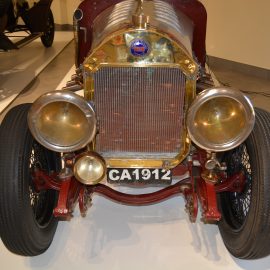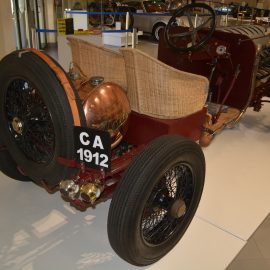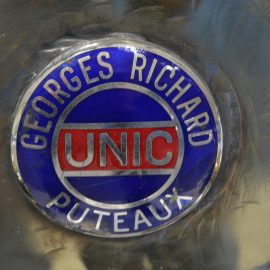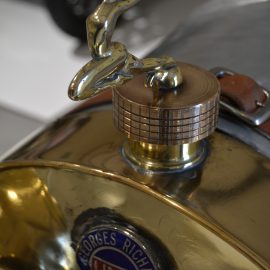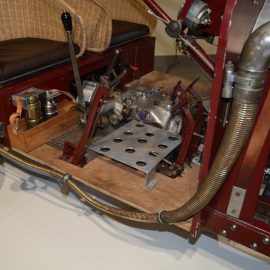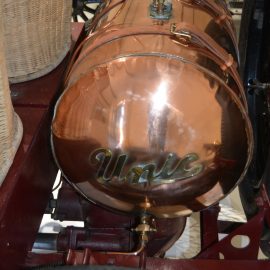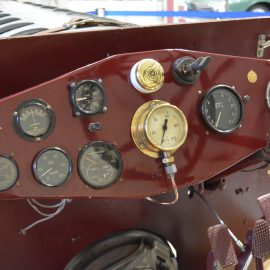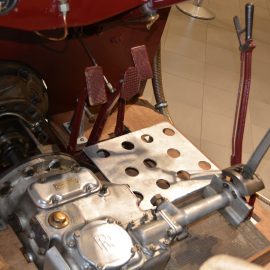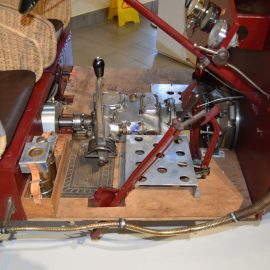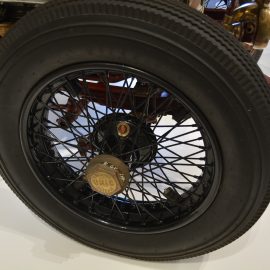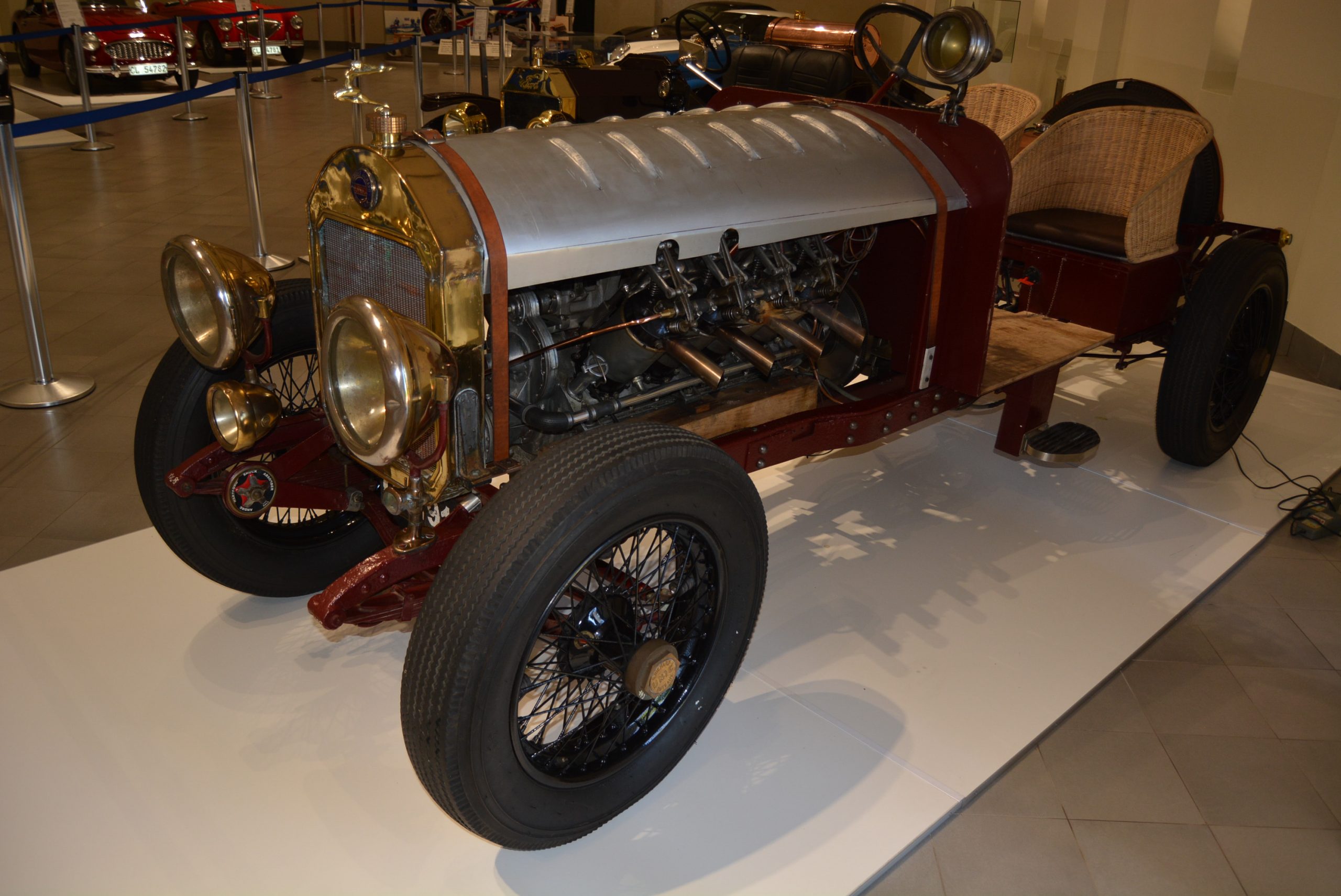
31 May Unique Unic
One of the star attractions currently on display at FMM is an Edwardian-style aero-engined special that was built in Cape Town by the enigmatic motor builder, racer and historian Dickon Daggitt…
Dickon Daggitt is a man of many talents and amongst his numerous interests is a desire to build ‘specials’ – cars that are, well, a bit special. The most recent example of his passion is perhaps the most outrageous, a giant aero-engined special built on a century-old chassis that makes Chitty Chitty Bang Bang look like a wimp by comparison…
Powering the beast is 1918 Curtiss OX-5 engine, which Dickon acquired in the UK. It is an 8,1-litre four-stroke water-cooled V8 that was the first American-designed aircraft engine to enter mass production. It found widespread use in a number of aircraft, perhaps the most famous being the Curtiss JN-4 Jenny WW1 training aircraft. Some 12 600 engines were built up to early-1919 and surplus units soon became available. Its post war popularity was its low cost, with almost-new examples selling for as low as $20, and its simplicity and lightness made it a popular choice for a number of Edwardian specials, as well as often being used in boats.
After battling for three months to get the engine to start because of complications with the magneto firing sequence, it did start with relative ease. But shortly afterwards it dropped a valve due to a machining problem (not carried out by Dickon!). There is only one pushrod per cylinder: the rod itself operates the exhaust valve while the pushrod tube activates the inlet valve with a falling rather than pushing action. Incidentally, the crankshaft has to be lifted in three places when assembling because if lifted only at each end, the shaft would bend! With the failed valve repaired and reinstalled, the V8 was able to produce its 100 bhp (75 kW) at 1 200 r/min, and a healthy 650 N.m of torque.
The chassis is of unknown origin and was found by Dickon under a tree in Pietermaritzburg. It was badly damaged and had cracked and been repaired, but by whom and when is a mystery. By virtue of the thread type (Whitworth), Dickon suspects it dates from around 1910/1920 and is of UK or European origin. The front and back axles were off the chassis when found.
The engine is mounted to the chassis on wooden beams – as it would have been in the aircraft – and Dickon chose oak. Copper shims are used between each engine mounting pedestal and the chassis to prevent distortion when bolting down. And the engine has to be mounted back-to-front, with a flywheel in place of where the propeller would have been.
A clutch assembly was fabricated and a four-speed Rolls-Royce gearbox installed. A Unic radiator was fitted up front and a fuel tank at the back: the car is registered as a Unic, a French car manufacturer that existed from 1904-39. Along with wire-spoke wheels on Unic hubs, two-wheel drum brakes, wicker seats, basic instrumentation and the balance of vital necessities, Dickon’s special was ready. It was fired up for the first time at a Crankhandle Club meeting before being taken to the 2018 Knysna Motor Show where, to celebrate Dickon’s birthday, the car was ‘officially’ started for the first time and did make an impressive inaugural run around the show area, making lots of noise, spitting flames and emitting fumes to the applause of an enthusiastic audience.
Check out this amazing Unic-Curtiss in Hall D…
(Acknowledgement to The Crankhandle Chronicle for some of the information used in this feature.)




